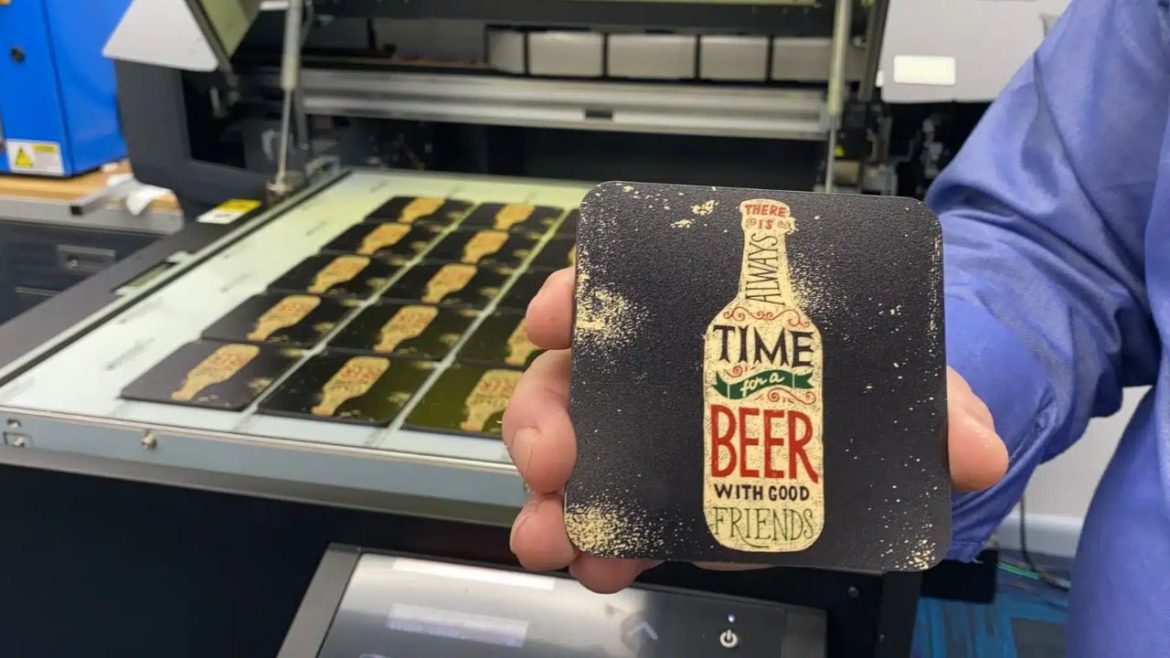With the growth of the demand in custom printing solutions, businesses of all types are more frequently using UV flatbed printers to satisfy client demands and increase the services offered. Usage by printing on glass, metal, plastic, acrylic, or even wood can be done very easily with the UV flatbed printers, which provide them with unmatched versatility, high-definition results, and compatibility options available with a wide variety of materials. Not every UV printer is the same, however. The selection of the right uv flatbed printer is a business decision, and hence prior knowledge of what to expect before the investment is of the essence to long-run productivity, quality, and receiving returns on the same.
Media Thickness and Print Size
The print area and the supported media thickness are also key considerations in choosing a UV flatbed printer. The AGP UV6090 model listed can have a large print bed of 600x900mm, and it can handle substrates of up to 160mm thick. This enables the businesses to print directly on a broad range of materials such as promotional items, signboards, tiles, packaging, and many more. Any company that deals with unusually big or thick objects must make sure that the size of the printer and the bed area of movement are adequate to handle their workflow situation.
Color Configuration and Ink Compatibility
Most UV printers are in standard color configuration (CMYK); however, expanding to CMYK+W+V introduces new possibilities of creative typesetting. White ink is used where the substrate is dark or transparent, and varnish is used to add texture and protection. The buyers ought to consider a printer which is capable of using several layers of ink in addition to one with a dependable ink delivery system which does not result in fading or clogging. Furthermore, the suitable UV inks are supposed to be able to resist scratching and fading with long durability and adhesion.
Software and Workflow Integration
Important consideration is RIP (Raster Image Processor) software compatibility. It controls the way the images are downloaded and printed. UV flatbed printer, a good model, must accept popular software such as Maintop, FlexiPRINT, RIIN, and have all flexible interaction with familiar design and printing routine. It is desirable that the software facilitates managing color and layout, prints queue management, and proficient handling. Production and minimization of errors can also be achieved by the use of advanced features like variable data printing, multi-pass settings, and live previews.
Automation and User-Friendliness Features
Automation can save operator error as well as increase efficiency. The latest changes in high-quality machines include automatic infrared height detection, the use of static elimination, and CCD visual positioning systems that are becoming a usual feature incorporated in high-quality machines. The functions assist in making real-time adjustments of print settings and enhance registration accuracy and print consistency. User-friendly interface, simple to operate controls, and simplified maintenance procedures prove particularly useful among companies that are new to UV printing or have a relatively small number of employees.
Productivity and Speed
The speed of prints may have a great influence on the amount of production and profitability in general. Where high resolution normally implies slower speeds, it is really important to have the balance between quality and efficiency. An AGP UV6090, as an example, can provide anything between 7.5m 2 /h under a given pass mode. In measuring speed, business owners need to know their average size of jobs and average turnaround time to be able to meet the demands without affecting the quality of output offered by the machine.
Quality and Durability of Building
UV flatbed printers present a long-term investment and should be constructed in a manner that makes them durable to constant use. All metal body and precision-engineered parts, along with stable mechanical motion, will help with quality and lifespan of print. Such aspects as twin servo motors assist in ensuring the accuracy during high speeds. A prospective purchaser must seek suppliers who have high-quality materials, have an extensive description of their products, and are able to support their machines with quality control activities.
After Sales and Warranty
Buying a UV flatbed printer is not only an act of buying a machine but also support for your business. A good after-sales support, such as remote instructions, solution manuals, and prompt technical support, would preclude expensive downtimes. Other companies such as AGP provide a one-year warranty, tutorial guides on installation, and customer support online. This assures the buyer. Availability of spare parts, maintenance equipment, and consumable materials also counts in ensuring that the machine is running smoothly.
Conclusion
A UV flatbed printer has to be approached with a keen eye on the technicalities, as well as the parameter specifications, capabilities of performance, and the eventual sustainability in service practices. Be it the quality of printhead, media compatibilities, the integration of software, and after-sales support, all these elements make an overall difference in the investment. The strategic use of an appropriate printer means that the companies are able to tap into new sources of creativity, simplify output, and diversify into lucrative sectors with ease.
